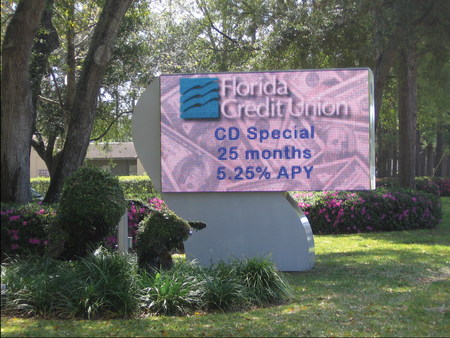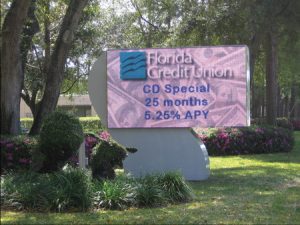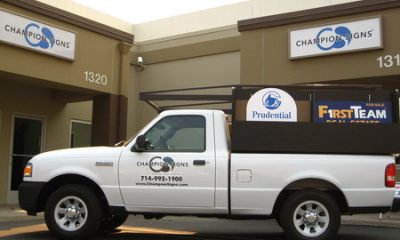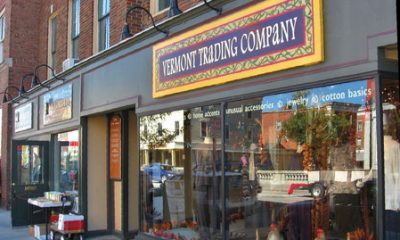News
Implementing USSC’s Research
Here’s how three people have used USSC studies in the field.
Published
16 years agoon

Since 1996, the United States Sign Council (USSC) has maintained a research relationship with Penn State University’s Pennsylvania Transportation Institute. During that time, the two groups have produced eight studies, highlights of which were recently compiled into a CD called “The Science of Sign Zoning.” Some of these were “test track” studies, for which signage and roadways were created, and some were real-world studies.
Different studies examined simple sign detection, the effects of parallel signs, the effects of various types of illumination on nighttime visibility, the visibility problems with ground-level signs (via computer simulation), distinctions between internal and external sign illumination, a real-world study of signs and traffic safety on the New Jersey Turnpike, and research that produced a guideline sign code, best-practices standards and a compendium of electronic-message-center (EMC) research.
Publishing studies is one thing; putting those studies to practical use takes it the desirable step further. In the following article, a county planner, a sign buyer and a sign-company owner share their experiences in using USSC research material in the field.
The sign buyer
Chris Clore serves as the VP of marketing for the eight-branch Florida Credit Union (FCU), headquartered in Gainesville; all its offices are located in the Sunshine State. The FCU’s 5.5-ft.-high x 10-ft.-wide, full-color, LED message center was already fully permitted and installed. However, the mayor publicly announced her opposition to LED signs (especially the credit union’s) and plans to change the sign ordinance. Even though Clore was assured her sign would be grandfathered regardless, “We simply pursued it because we thought the city staff and elected/appointed officials were agenda-driven only.”
In this case, the “we” included five end users, Lynn Dowling (Dowling Signs, which fabricated the FCU sign) and the local chamber of commerce.
AdvertisementClore helped present a comprehensive notebook of material, including articles from the Small Business Administration; articles written by Jim, Thomas and Susan Claus (www.plannersresource.org) and five USSC studies:
• “Sign Visibility Research and Traffic Study Overview”
• “Environmental Impact of On-Premise Sign Lighting”
• “Driver Information Load”
• “Electronic Message Center Research Review” and
• “Traffic Safety Study”
“We also researched the city staff member [Dom Nozzi], who seemed to be spearheading the misinformation campaign, and found that he had a book published [in 2003] called Road to Ruin. Basically, it talks about how Gainesville is suffering from urban sprawl and all the things that are wrong with bringing businesses into a city. USSC helped us know who we were up against,” Clore explained.
Once they realized the deck was stacked, they sent out letters to approximately 400 local businesses. From that effort, “we ended up with five to six very vocal and reasonable people.”
Additionally, Dowling, an International Sign Assn. (ISA) board member, brought ISA information as well (wouldn’t it be great to have a USSC representative on the Signage Foundation Inc. board?), which was shared with Clore and the chamber, once its president was called personally.
Fortunately, two members of the planning board believed the city’s position to be “unreasonable,” Clore said, and they requested “getting a realistic view of LED signs, safety issues, etc. They asked staff to set up a consumer forum.”
AdvertisementWhereas the city planners painted a picture of citizen complaints, Clore said the small group of “citizens” was “current and former members of the City Beautification Board.” In contrast, Clore said she was contacted by “a number of businesses asking how to get such a sign – a community college, a city planner from a neighboring town, churches, insurance salesmen and banks, just to name the calls I remembered.”
The planners tried to claim “LEDs cause visual interruptions that result in a higher rate of traffic accidents,” Clore said. “We disproved this objection with USSC material. The city staff tried to use material that was more than 10 years old and was specifically ‘inconclusive.’”
On the aesthetics objection, “the city staff tried to bring in articles from Scenic America, but thanks to USSC, we were able to show that Scenic America has its own agenda and couldn’t be quoted as a third-party, uninterested source for research,” Clore reported.
Overall, the process involved three planning-board meetings and the citizens forum. “In one meeting, we had about 50 people speaking for LED signs and five people who spoke against them,” Clore recalled. “The city kept saying it wanted to hear from citizens, not businesses.” So they stressed that business owners and employees are also citizens.
“They didn’t like that,” Clore observed.
The proposed compromise would allow the size of static signage to remain unchanged. If a monument sign included LEDs, they could only constitute 50% of the space; otherwise, sign requirements would remain unchanged. If the entire sign used LEDs, the total sign size would be reduced by 25%.
AdvertisementThe result? A split decision on September 24, with three commissioners for it, and three against it. So it’s now back with the planning commission.
At the least, the effort remains a Pyrrhic victory. Clore concluded, “We learned that information is very powerful. We know they didn’t read it, but having a notebook full of studies and articles, accompanied by five USSC studies, made quite a statement. And when presenters would quote from a study or a section of the notebook, it showed that we knew what we were talking about. We also learned there’s a lot of apathy with businesses. We all complain, but very few of us do anything about problems.”
As for media coverage, the TV station gave Clore’s group significant “face time,” but the newspaper accounts “only printed the city position,” Clore said.
“I have to give lots of credit to the USSC staff. They helped us locate studies that would help, set me straight on the cause of Scenic America, and gave me great advice in terms of the approach to take. We couldn’t have done it without them,” Clore concluded.
The planner
Larry Waetzman has 34 years of professional planning experience, but he has also worked within the private sector, so he enjoys a more balanced perspective. At the 2002 National Planning Conference (the American Planning Assn.’s [APA] primary gathering) in Chicago, he and USSC Executive Director Andy Bertucci spoke about “Bringing Science to Sign Regulation.” He helped introduce USSC to the APA. They’ve submitted a proposal to do so again at the 2008 Planning Conference.
Waetzman generously provided ST with a transcript of his November 29, 2006 testimony before the town of Media, PA’s Borough Zoning Board, with regard to proposed Hampton Inn signage. The following is excerpted from his testimony, as he represented Pinnacle Hospitality LLC, Hampton Inn’s parent company. Although he didn’t use USSC visibility charts verbatim, “I used my own variations, which have similar results, but I find are more effective in convincing the board of the scientific basis of the evidence,” Waetzman said.
The lot in question was then occupied by a two-story medical building, scheduled to be razed, which would be replaced by a four-story, 116-room Hampton Inn and Suites. The trapezoidal, 1.7-acre site primarily resided in Media, but a portion spilled over into Nether Providence Township. Although the lot has frontage on two streets, most patrons would enter from a third street. Media’s portion was zoned highway business office (HBO). Non-commercial uses adjoin the site. Some single-family dwellings adjoined a property line. Three other motels were located within 0.3 miles.
Waetzman testified the motel would incur less traffic than the medical facility and, overall, would be “less intensive” than the medical facility, as would be other existing HBO uses, including a supermarket, a liquor store and car dealerships.
The local zoning ordinance allows one square foot of signage for every linear foot of building width, up to 50 sq. ft. One-story buildings are thus equal to four-story buildings. A side of the building facing one street is 242 ft. long, but the actual front of the motel is only 15 ft. wide. Thus, the code would only allow a 15-sq.-ft. sign.
The motel requested a 79-sq.-ft. wall sign (with 3-ft. letters) that would constitute less than 0.7% of the available wall space. On another side of the motel, the same wall sign would encompass 2.3% of the available wall space. An Eckerd Drugs wall sign on the same street is three times bigger, despite being situated on a one-story building.
Hampton Inn was also requesting a 16-ft.-tall sign with a 47-sq.-ft. sign area, and a 5-ft.-tall, 8-sq.-ft. freestanding sign to identify an entrance.
For corner properties, the HBO District sign code only allowed 25 sq. ft. on the side of a building, and, if there was also a freestanding sign, together the two signs couldn’t exceed 50 sq. ft. Waetzman said the permissible, 25-sq.-ft. wall signs “would be so small as to be meaningless.” Yet he found a wall sign on the existing medical facility that spanned 102 sq. ft. With two other wall signs, the medical facility’s total signage covers an estimated 177 sq. ft.; thus, it violates the code twice.
Elsewhere, at the Eckerd Drugs across the street, Waetzman calculated its four signs to total 237 sq. ft. The Hampton Inn total variance request would amount to 212 sq. ft.
Waetzman then explained visual acuity, and the different needs of signage in a pedestrian area, versus signs on roads where the traffic averages 50 mph. His critical sentence of testimony explained, “Thus, the ability to provide a sign that is large enough to be easily seen is actually a safety issue.”
Elsewhere, he testified (after having cited stopping-distance data), “This argues for a larger-than-minimum sign area to increase the likelihood of the motorist being able to make a timely and safe maneuver into the lefthand lane, slow his or her vehicle, and safely make the turn.” More specifically, “We have seen from the Sight Distance/Speed Relationship exhibits that, in all but one instance, the ideal anticipatory sight distance is unobtainable for all signs proposed for the Hampton Inn and Suites, but that the desirable and minimum AASHTO [American Assn. of State Highway and Transportation Officials] stopping sign distances can be achieved.”
Waetzman said one of the sign code’s stated purposes included the wording “to protect the public from damage or injury caused or attributable to distractions and obstructions caused by improperly designed or located signs [emphasis added].” So, improper can also mean too small to be sufficiently visible.
Waetzman concluded, “The borough was concerned about preserving Media’s ‘character’, but I realized that I had to turn the issue into one of safety.” Opposition came from neighbors, the borough’s solicitor and the president of the Board of Commissioners from the adjoining township.
Were they appreciative of his expert testimony? Waetzman said, “No. They remained unhappy.”
The sign company
Bob Persichetti operates Effective Signworks in Burlington, NJ. He states (sadly), “I was recently asked by a potential customer who my biggest competitor was. Without hesitation, I said, ‘Zoning.’ I wasn’t planning to answer that way, but when I thought about to whom I lose the majority of my work, it was painfully obvious.”
Although Persichetti blames zoning procedures, he’s also sympathetic. Typically, within a town’s workforce, “someone has some understanding of the relationship between good signage and good business and would welcome guidance,” he suggested. “Many of our officials dread sign-related issues. Some, not because they dislike signs, but because they realize it’s easy to do the wrong thing.”
And he also blames the sign industry for exploiting any lack of a sign code and producing “ghastly monstrosities.” Plus, dilapidated signs that have been grandfathered incite tighter codes, he believes.
“Now, through USSC’s efforts, we have proven, tested scientific data and research at our fingertips to help us educate and improve sign-code law. I have overcome some height restrictions. I’ve been able to demonstrate that an 8-ft. height maximum on a freestanding sign is a traffic-safety hazard, because the resulting poor visibility allows an insufficient stopping distance.”
Persichetti said he used two USSC studies to do this. The 2006 study; “On-premise Signs: Determination of Parallel Sign Legibility and Letter Heights”; and the 2003 study; “Sign Visibility: Effects of Traffic Characteristics and Mounting Height.”
Another time, he overcame a code that only allowed a 30-sq.-ft. wall sign despite a 350-ft. setback. “We were able to demonstrate zero visibility through the use of published visibility charts (the 1998 study, “Sign Legibility,” which included the Legibility Index).
“In another case, we overcame an ordinance that only allowed external illumination. We demonstrated internal illumination not only allowed for better visibility and readability, but it actually illuminated less ambient area,” Persichetti explained.
He used two separate 2004 studies, “Relative Visibility of Internally and Externally Illuminated On-Premise Signs;” and “Environmental Impact of On-premise Sign Lighting.”
Through these experiences, Persichetti has found that virtually all objections (except for ones about EMCs) are based on aesthetics. As for EMCs, he likes the “Electronic Message Center Research Review” USSC has compiled.
Persichetti observes, “The town may still want to regulate the change intervals [sometimes known as “dwell time”] and graphic use to prevent abuse, and that’s an acceptable compromise. Many municipalities already use this technology through portable DOT versions.”
He concludes, “I’ve found, whether it’s selling a customer or a town, 50% of the sales process is education on the value of signage. Here is yet another resource the USSC has put in our hands.”

SPONSORED VIDEO
Introducing the Sign Industry Podcast
The Sign Industry Podcast is a platform for every sign person out there — from the old-timers who bent neon and hand-lettered boats to those venturing into new technologies — we want to get their stories out for everyone to hear. Come join us and listen to stories, learn tricks or techniques, and get insights of what’s to come. We are the world’s second oldest profession. The folks who started the world’s oldest profession needed a sign.

Orbus Celebrates Earth Day With Recycling Achievements

American Sign Museum Names New Executive Director

3 Things Print Pros Must Do to Build Stronger Relationships in the Interiors Market
Subscribe

Bulletins
Get the most important news and business ideas from Signs of the Times magazine's news bulletin.
Most Popular
-

 Tip Sheet1 week ago
Tip Sheet1 week agoAlways Brand Yourself and Wear Fewer Hats — Two of April’s Sign Tips
-

 Photo Gallery2 days ago
Photo Gallery2 days ago30 Snapshots of the 2024 ISA Sign Expo
-

 Ask Signs of the Times4 days ago
Ask Signs of the Times4 days agoWhy Are Signs from Canva so Overloaded and Similar?
-

 Real Deal1 week ago
Real Deal1 week agoA Woman Sign Company Owner Confronts a Sexist Wholesaler
-

 Benchmarks7 days ago
Benchmarks7 days ago6 Sports Venue Signs Deserving a Standing Ovation
-

 Women in Signs1 week ago
Women in Signs1 week ago2024 Women in Signs: Megan Bradley
-

 Photo Gallery1 week ago
Photo Gallery1 week ago21 Larry Albright Plasma Globes, Crackle Tubes and More
-

 Women in Signs1 week ago
Women in Signs1 week ago2024 Women in Signs: Ashley Borell











